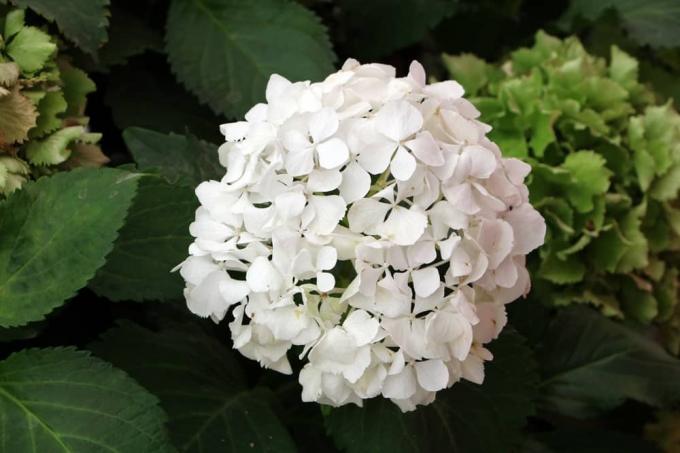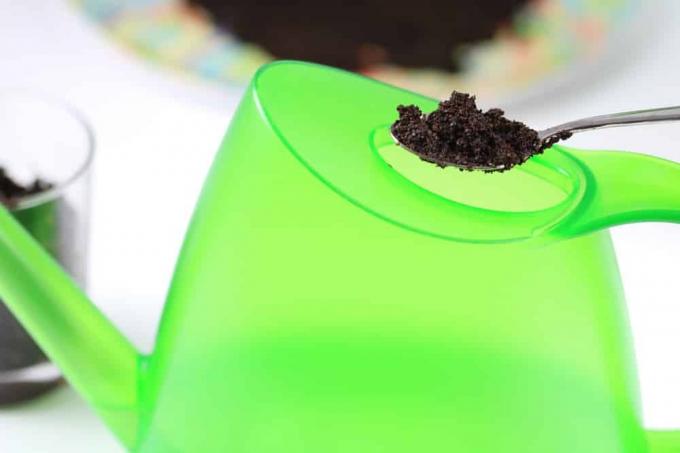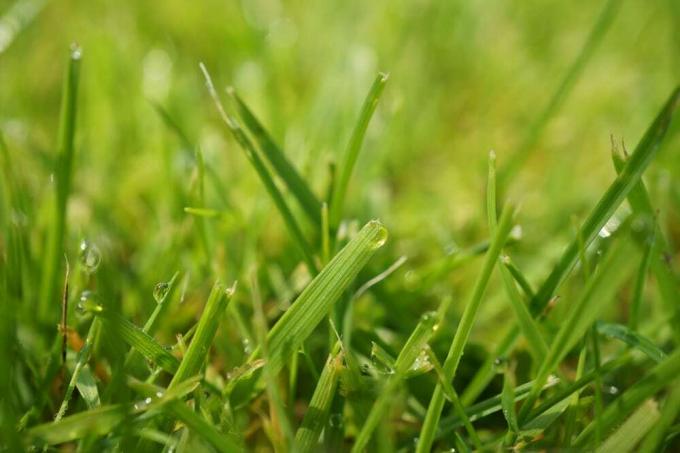

Table of contents
- The right hydrangea fertilizer
- Mineral and mineral-organic complete fertilizer for hydrangeas in beds
- Mineral and mineral-organic liquid fertilizers for pot hydrangeas
- Special fertilizer for a blue coloring in beds and tubs
- Organic Fertilizers
- Conclusion
The top priority for lush hydrangea blooms is a balanced supply of nutrients. The capricious flower beauties have special requirements when it comes to cultivation that need to be heeded. The soil should be slightly acidic and rich in nutrients. Since the energy requirement is at a high level, hydrangeas require a constant supply. If you reach for the next best fertilizer, skimp on the nutrient supply or give too much of a good thing, you will incur the displeasure of your demanding ornamental trees. Read here what and how often you should fertilize hydrangeas?
The right hydrangea fertilizer
Hydrangeas need a lot of energy to bring out their magnificent blossoms and foliage. Since the surrounding soil can only provide the required amount to a limited extent, the support of adequate fertilizers is essential. This is important for a thriving flowering shrub, not least in the narrowly limited substrate volume of a tub shortly after planting. In this respect, the requirements of Hydrangea fall outside the usual framework of classic ornamental shrubs. We have put together an overview of the criteria that the right hydrangea fertilizer should meet for you here:
- High nitrogen content for leaf and flower growth
- A rich supply of potassium for flower induction and flower abundance
- Little phosphorus so that the pH does not rise excessively
- Trace elements such as iron, magnesium, sulfur, zinc, manganese and others
- An acidic pH less than 5 so that nutrients are available to the roots
In order to meet the nutrient requirements of hydrangeas according to these specifications, there is a wide range of fertilizers to choose from. On the other hand, we do not recommend using a commercially available complete fertilizer such as Blaukorn, as its composition is aimed at completely different specified requirements. It is better to opt for a mineral or mineral-organic special fertilizer from the specialist trade. Alternatively, you can fertilize Hydrangea purely organically, whereby the dedicated requirements should also remain in focus here.
Mineral and mineral-organic complete fertilizer for hydrangeas in beds
Beckmann hydrangea fertilizer
The mineral-organic solid fertilizer meets the requirements of hydrangeas with an NPK composition of 6+5+10. In addition, the product contains 200 grams of alum for the blue coloring of pink Hydrangea macrophylla in an extra sachet.
- Dosage: 80 grams per square meter
- Frequency: From March to August every 3 months
Gärtner's hydrangea fertilizer
Mineral-organic solid fertilizer with an NPK nutrient ratio of 8+3+5, precisely balanced for the needs of a garden, farmer's or plate hydrangea. The product is available with a practical dosing spoon.
- Dosage: 40 grams per square meter
- Frequency: Spread and work in every 3-4 weeks from March to July
Substral Osmocot Rhododendron and Hydrangea fertilizer
The innovative depot fertilizer comes with resin-coated fertilizer pearls and a long-lasting effect. The resin layer ensures that the nutrients with NPK 16+9+10 and numerous trace nutrients are only gradually released to the hydrangeas. Thus, despite the relatively high concentration of nutrient carriers, an overdose cannot occur.
- Dosage: 60-80 g per ornamental shrub
- Frequency: 1 application in March
Tip:
Solid fertilizers are spread according to the dosage instructions and gently worked into the surface of the earth. Afterwards, extensive watering has the highest priority for optimal effectiveness.
Mineral and mineral-organic liquid fertilizers for pot hydrangeas

Compo hydrangea and camellia fertilizer
The liquid special fertilizer for pot hydrangeas convinces with an NPK formulation of 7+3+6 as well as various trace nutrients. The product also contains iron to support rich green leaf color and flowering.
- Dosage: 1 cap per 5 liters of water
- Frequency: From March to August every 14 days
Cuxin liquid for hydrangeas and rhododendrons
In this liquid preparation, organic components predominate over mineral nutrients, resulting in a gentle effect on hydrangeas. Iron is added to the NPK composition of 4+5+6 for a rich green leaf color.
- Dosage: 3-5 ml to 1 liter of irrigation water
- Frequency: Add to watering water 2 to 3 times a week from March to July
Chrystal hydrangeas and azaleas
The liquid fertilizer, balanced with a nutrient combination of NPK 6+4+7, supplies hungry hydrangeas in the pot not only with the main nutrients, but is also equipped with the vitamin plus System. Thus, the flowering shrub receives plenty of trace elements for a long flowering period and robust winter hardiness.
- Dosage: 10 ml in 1 liter of water
- Frequency: Add to the irrigation water weekly from March to August
Special fertilizer for a blue coloring in beds and tubs
Compo Blue Hydrangeas
Water-soluble fertilizer with aluminum for the targeted blue coloring of pink garden hydrangeas. The powder can either be scattered or dissolved in water.
- Dosage: Scatter 1 measuring spoon (enclosed) on the bush or add to 2 liters of irrigation water
- Frequency: From March to October, whenever the blue color is fading
Norax hydrangea fertilizer 'gardener quality' with deep blue dye
The fertilizer scores with an NPK dosage of 8+6+8 plus 2 percent alum for wonderfully blue hydrangea blossoms. Thanks to organic ingredients such as nitrogen-rich horn shavings, the mineral-organic preparation also makes a valuable contribution to maintaining soil quality.
- Dosage: 50-80 g per hydrangea bush
- Frequency: In March and June
Terrasan Hydrangea Fertilizer Blue
The traditional manufacturer of sophisticated special fertilizers offers hobby gardeners a cheap hydrangea fertilizer that meets expectations with an NPK composition of 7+3+5. However, the alum contained is only sufficient to obtain a blue colouration. Experience has shown that the dosage for adult hydrangeas is not sufficient to change the color of a pink garden hydrangea into an intense shade of blue.
- Dosage: 1 capful for 3 liters of irrigation water
- Frequency: Every 8 to 14 days from March to September or when the blue color fades
Tip:
In order to turn a pink-flowering peasant or plate hydrangea into a bright blue flower beauty, it is not absolutely necessary to purchase special fertilizer for the blue colouration. If all the general conditions are right, the regular administration of alum from the pharmacy is sufficient. Spread regularly from March to August at an average dosage of 50 grams per bush, the pH remains at 4 to 4.5 and the blue color lasts.
Organic Fertilizers
Environmentally conscious hobby gardeners can easily remain true to their ecologically oriented garden care and still provide their hydrangeas with sufficient nutrients. As long as an organic fertilizer is designed not to affect the acidic pH value, there is nothing to prevent the magnificent flowering shrubs from being cared for in a way that is in touch with nature. The following organic fertilizers can be produced by yourself, which noticeably relieves the wallet at the same time.
leaf compost
The prime example of an acidic compost is created after a 2-year rotting of oak leaves. Birch, alder or other types of foliage can be added if this organic fertilizer is not explicitly intended to cause a blue colouration. The common method of accelerating composting with lime is not advisable in this exceptional case.
- Dosage: Work in and water a 2-3 cm layer of compost
- Frequency: From March to the end of August every 2 weeks
needle compost
Needle compost goes in a similar direction to leaf compost mentioned above. A disadvantage should be assessed that the Rotte drags on up to 3 years. If only the finer spruce and larch needles are composted instead of thick pine needles, the process is already over after 2 years. The alternating layering with lawn clippings has a beneficial effect.
- Dosage: Spread a 2-3 cm thick layer, rake in and pour
- Frequency: From March to the end of August every 2 weeks
Horn shavings / horn meal
Nitrogen is abundant in crushed and ground hooves and horns of slaughter cattle. Since hungry hydrangeas explicitly demand this nutrient, ecologically oriented hobby gardeners always have horn shavings and horn meal at hand.
- Dosage: Rake a handful flat into the substrate on each bush
- Frequency: Once at the start of the season in March/April
coffee grounds
Dried coffee grounds are rich in nitrogen, potassium and magnesium. In addition, the home remedy lowers the pH of the soil on a small scale. Since the caffeine it contains is also toxic to gluttonous snails, environmentally conscious hydrangea gardeners use coffee grounds as a supplementary fertilizer.
- Dosage: Spread a thin layer on the root disk
- Frequency: From March to July after each rain
If there is no possibility of producing compost in the garden, the specialist trade offers suitable natural products. The Azet hydrangea fertilizer from Neudorff, for example, contains only plant and animal-based nutrients.
Conclusion
Lavishly blooming hydrangeas always result from a carefully balanced supply of nutrients. Since the classic complete fertilizer does not correspond to the requirements of Hydrangea, specially formulated fertilizers are required. Suitable preparations are rich in nitrogen and potassium and also low in phosphorus. In this way, the high nutrient requirements of these opulent flowering shrubs are taken into account, as well as their desire for an acidic pH value of 4 to a maximum of 5.5. It is up to you to decide to what extent you prefer a mineral, mineral-organic or purely organic fertilizer.
 garden editorial
garden editorial I write about everything that interests me in my garden.
Learn more about fertilizer

Lawn lime: Lime against moss in the lawn
As soon as moss appears in the lawn, many a hobby gardener becomes restless - because soon the moss carpet can take over entire areas. With lawn lime, however, the unwelcome visitor can be skilfully put in his place.

Build your own Bokashi bucket | DIY instructions
Most of the kitchen waste goes on the compost or in the organic bin to add it back to nature's cycle. But there is a way to gain valuable fertilizer beforehand. We show how easy it is to build a Bokashi bucket and use it to obtain liquid fertilizer on the balcony or even in the apartment.

These 8 plants don't like coffee grounds as fertilizer
Hobby gardeners swear by the effect of the coffee grounds. It is fertilizer, snail protection, soil conditioner and cat deterrent all at the same time. In addition, it is free of charge and occurs daily in the household. Most plants are strengthened, but some are sensitive to the addition of coffee. We clarify.

Fertilize Christmas roses properly: 11 effective home remedies
Christmas roses are special flowers because, unlike almost all other perennials, they bloom in winter. They are insensitive and frost-hardy, and they can also multiply independently. Here you can find out what needs to be considered when fertilizing.

Lawn Bokashi: 6 steps to a cheap & natural fertilizer
The name Bokashi is still largely unknown. This method of using grass clippings comes from Japan. With a little preparation and a special form of processing, the clippings become valuable, nutrient-rich fertilizer that can be easily distributed in the garden.

Wood ash as fertilizer | These 70 plants love barbecue and charcoal
Home gardeners with a fireplace or tiled stove receive a natural fertilizer for free. Charcoal and charcoal leave behind a dusty residue that is packed with valuable nutrients. Read here under what conditions wood ash is suitable as a fertilizer. These 70 plants benefit from the unorthodox nutrient supply.


